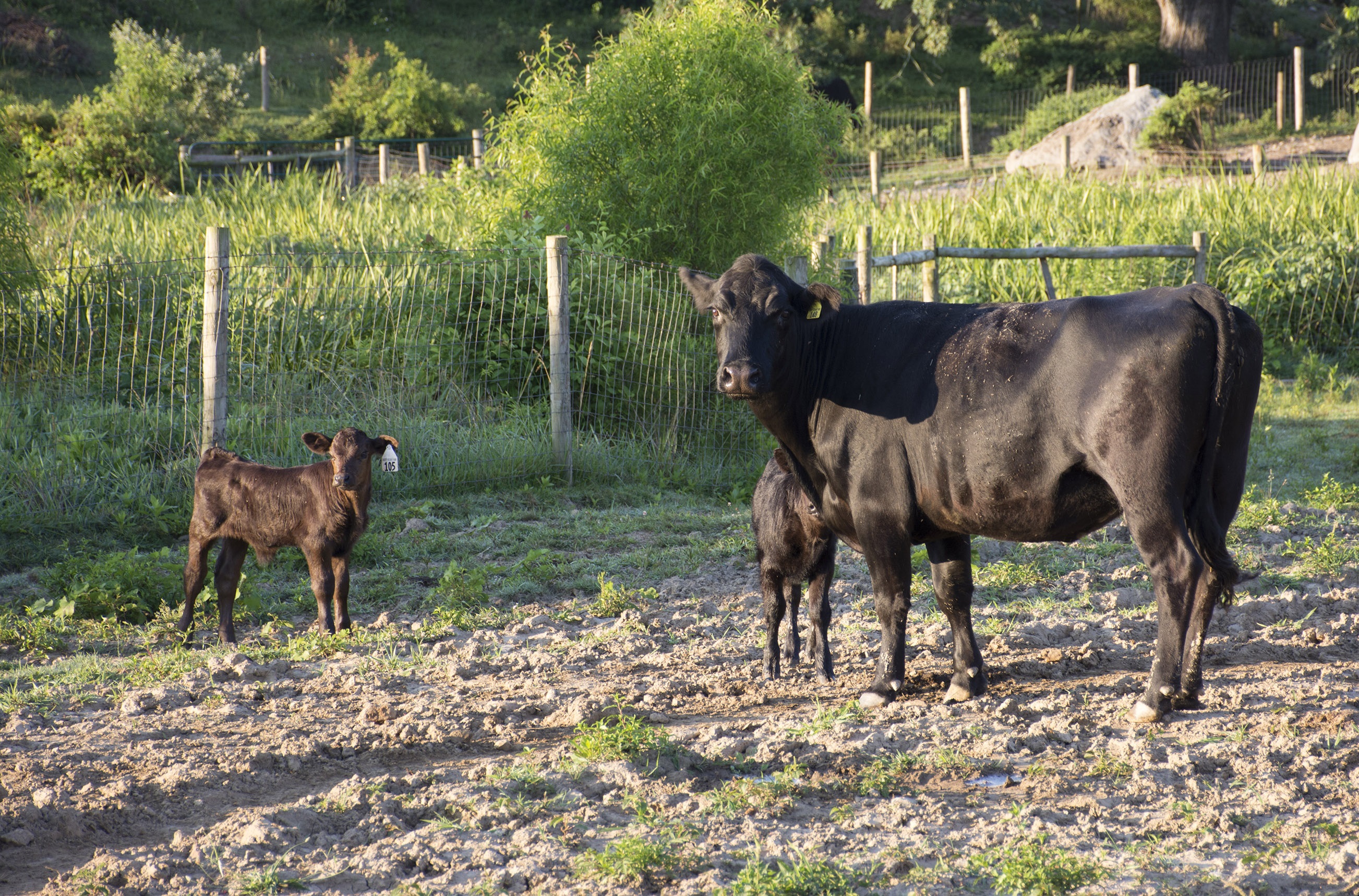You’re at the grocery store deciding what to buy for dinner this week. There’s a lot to consider: cut, cost, sell-by-date, local, organic, grass-fed. Should you shell out the extra money for grass-fed beef? Does it actually mean anything, or is it just a good marketing strategy? We’ve done the research for you so you can make an informed decision for your household.
What are other people buying? Conventional corn-fed beef is the most widely produced (and purchased) beef in the country, but the demand for grass-fed beef is growing at rate of 25-30% per year. In 1998, retail sales were about $5 million; in 2015, they’d grown to $400 million.
What do the labels even mean? Conventional cattle spend the beginning of their lives in pasture. At about 12-18 months, they’re moved to feed lots where they spend the last four to six months of their lives on a grain-based diet to help them quickly gain weight (and marbling).
On the other hand, “grass-fed cattle” is an ambiguous term that indicates varying lengths of pasture time and varying levels of non-grass feeding—because even “grass-fed” cattle can be finished on corn in their final 90 days, or fed molasses during winter when grass is scarce. In early 2016, the USDA revoked their definitive “grass-fed” labeling standard, which only allowed grass, hay, and other forms of roughage. Because most farmers weren’t following the strict rules, the label created confusion. Grass-fed beef can still bear the “USDA Process Verified” label, which can confirm a company’s claim that its beef is grass-fed, but that label still creates confusion because it can refer to other verified processes (e.g, no antibiotics ever, cage-free, vegetarian diet).
Some organizations, such as the American Grassfed Association (AGA) and the Food Alliance (FA), have developed grass-fed standards that are more comprehensive than those of the USDA. The AGA and FA share a certification process, which requires producers to meet four key requirements: diet, confinement, antibiotics and hormones, and origin. The cattle are fed only grass and non-grain roughage for their entire lives; they’re pasture-raised and never confined on feedlots; they’re never treated with antibiotics or growth hormones; and they’re born and raised on family-owned American farms.
Is one better for me than the other? There are positives and negatives to both. Grass-fed beef has a different fatty acid profile than grain-fed. Because grass-fed beef has a higher density of omega-3 fatty acids and conjugated linoleic acids (CLAs), you can get the same amount of these beneficial nutrients by consuming significantly less grass-fed beef—so you’re getting the same nutritional bang with less saturated fat and cholesterol. Omega-3s are necessary for brain function and normal growth and development, and may lower risk of heart disease, cancer, and arthritis—though it’s important to note that neither grass-fed nor grain-fed beef is a good source of omega-3s to begin with. CLAs are trans-fatty acids that occur naturally in ruminant animals. Some studies suggest that they may affect body composition positively, as well as reduce the risk of cancer, atherosclerosis, and diabetes; however, we need more research to be confident of their benefits.
One consideration in favor of grass-fed cattle is that grain-fed cattle are more likely to experience E. coli overgrowth due to acidic conditions in their intestines. That E.coli can be spread through fecal matter, potentially causing human illness if the meat is processed in unsanitary conditions.
Do they taste different? Yes, but there are other factors. Grass-fed beef will often have less fat marbling, which can lead to reduced flavor and increased toughness. However, the taste of beef differs greatly by breed and brand.
Is grass-fed better for the environment? It depends.
Honestly, any beef has a high carbon footprint. All cattle release methane into the environment—grass-fed cattle actually release more, because grass is less nutrient-dense than grain, so it takes them longer to grow to the right size for slaughter. And in the winter, it may require more gas to bring in hay and haylage than grain, because you need more of them to feed an equal number of cattle. However, grass can sequester carbon dioxide released into the environment, partially compensating for the methane released in terms of greenhouse gases.
But it’s definitely better for the cattle, right? Not necessarily.
Cows find grain tastier than grass, but they can only eat so much of it. Too much, too fast causes heartburn, rumen ulcers, liver abscesses, and even sudden death from bacterial overgrowth. Just like humans, cattle need well-balanced diets with plenty of fiber. However, well-managed corn-fed cattle also eat some grass and other forms of roughage, and they’re just as healthy as grass-fed cattle.
Living conditions vary by farm—cows like their hooves to be dry, and they prefer cool, shady spaces where they have room to walk around. A hot, crowded, muddy feed lot and a freezing hillside in a snowstorm both present problems.
So what should I do?!? There are tradeoffs to both grass-fed and grain-fed beef. Grass-fed beef is slightly higher in beneficial omega-3s and possibly beneficial CLAs, but it may also have a less enjoyable taste and tougher texture. It’s also nearly always higher in price, and you can’t be sure that you’re getting what you pay for in environmental and ethical benefits.
When deciding between the two, current labeling won’t help you much. It’s probably most important to know your farmer. If sustainability and animal treatment matter to you, take the time to buy from farmers’ markets and visit a farm or two with your family. Find someone whose compassion and for animals shines through. It might take a little research, but it’s your best bet for making a decision you’re proud of.







